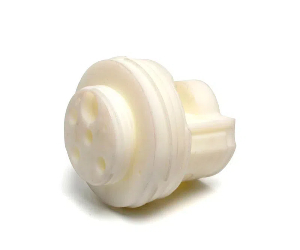Injection molding is a highly efficient manufacturing process, but design flaws can lead to defects, increased costs, and production delays. Below are 15 common injection molding design mistakes and solutions how to avoid them.
1. Flaws in the Geometric Design of Injection Mold Mistakes: Thick Walls – Causes sink marks, warping, and longer cooling times.Uneven Wall Thickness – Leads to inconsistent shrinkage and part distortion.Sharp Corners – Creates stress concentrations and weak points.Solutions: Maintain uniform wall thickness (typically 1-4mm, depending on material). Use gradual transitions between thick and thin sections. Add fillets and radii (minimum 0.5mm) to reduce stress. 2. Material Selection Issues Mistakes: Choosing the wrong material for the application (e.g., brittle plastic for high-impact parts). Ignoring material shrinkage rates, leading to dimensional inaccuracies. Solutions: Select materials based on mechanical properties, temperature resistance, and chemical exposure . Account for shrinkage rates (e.g., ABS ~0.5%, Nylon ~1.5%) in design. 3. Gate and Vent Design Flaws Mistakes: Incorrect gate location – Causes flow imbalances, weld lines, or air traps.Insufficient venting – Leads to gas burn marks or incomplete filling.Solutions: Place gates in thicker sections to ensure proper flow. Use multiple vents (0.03mm depth) to allow trapped air to escape. 4. Tooling and Manufacturability Obstacles Mistakes: Undercuts without proper slides/lifters – Makes ejection difficult.Lack of draft angles – Causes part sticking and ejection failures.Solutions: Add draft angles (1-2° for external, 0.5-1° for internal walls). Design side actions or collapsible cores for undercuts. 5. Tolerance and Precision Complications Mistakes: Overly tight tolerances – Increases tooling costs and reject rates. Ignoring mold deflection under high pressure. Solutions: Follow standard tolerances (±0.1mm for most plastics). Reinforce mold structure to prevent deflection. 6. Surface Finish & Aesthetic Defects Mistakes: Poor texture or polish – Causes visible flow marks or sink marks. Mismatched parting lines – Creates flash or misalignment. Solutions: Specify surface finish requirements (SPI A1 for high gloss). Ensure proper mold alignment to avoid parting line defects. 7. Post-Processing Difficulties Mistakes: Excessive ejector pin marks in critical areas. Difficult assembly due to poor snap-fit or living hinge design . Solutions: Position ejector pins in non-critical areas . Optimize snap-fit tolerances (typically 0.5mm interference). Summary Table: Common Mistakes in Injection Molding Design & Recommendations Mistake Problem Caused Solution Thick walls Sink marks, warping Keep walls uniform (1-4mm) Sharp corners Stress cracks Add fillets (R≥0.5mm) Wrong material Part failure Choose based on application Poor gate placement Weld lines, voids Gate in thick sections No draft angles Sticking in mold Add 1-2° draft Overly tight tolerances High cost Use standard (±0.1mm)
How MFGPROTO Can Help Avoid Costly Errors in Injection Molding Design At RapidDirect , we provide: DFM (Design for Manufacturability) Analysis – Identify and fix design flaws early.Material Selection Guidance – Choose the best plastic for your application.High-Precision Tooling – Avoid mold defects with expert engineering.Rapid Prototyping & Production – Test designs before full-scale manufacturing.Need professional injection molding services? Contact MFGPROTO today for a seamless production experience!
Would you like a detailed review of your 15 Injection Molding Design Mistakes and Solutions? Let’s discuss how we can optimize your project! 🚀
